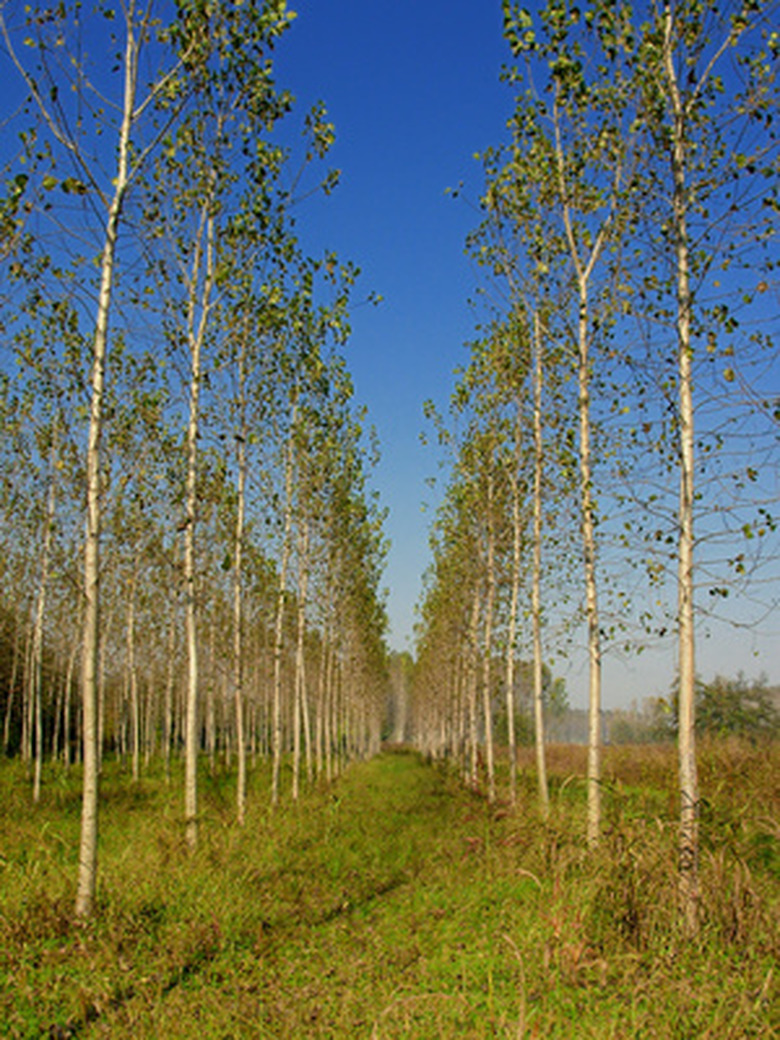What Is A Poplar Tree?
Poplar trees are unusual-looking trees that are mostly used as a windbreak. These trees are often found throughout areas where rivers are common. These trees are relatively vulnerable to pests and diseases and they also produce suckers that often aggravate landscapers. The wood of the poplar tree is only useful as firewood.
Identification
Poplar trees have broad leaves and are deciduous. The poplar tree has an unusual shape: an erect and cone-shaped evergreen with an upward slope. Poplar trees have alternating leaves called stipules and have flowers in drooping catkins. The flowers have one-chambered ovaries with many ovules.
- Poplar trees are unusual-looking trees that are mostly used as a windbreak.
- Poplar trees have alternating leaves called stipules and have flowers in drooping catkins.
Geography
Poplar trees are mostly found in the northern temperate zone. They usually prefer moist ground and are often found alongside rivers. Like all trees, the soil around the poplar tree must not be compacted or the tree will have a difficult time absorbing nutrients.
Types
Poplar trees come in five readily distinguishable types: White, Grey, Aspen, Black and Lombardy. The first three have downy shoots, catkins that are very dense, scales fringed with hair, and stamens with varying numbers from four to 12. The last two have smooth shoots, smooth scales and 12 stamens or more.
Owning
Poplar trees do not need much care as they are known for being hardy. Finding information on caring for poplar trees is difficult because, for landscape purposes, poplar trees are mostly not recommended. Getting rid of poplars is difficult and usually requires a long-term use of herbicide. Those who do not mind marring their landscape can simply cut down the poplar and cut out the stump.
- Poplar trees are mostly found in the northern temperate zone.
- Finding information on caring for poplar trees is difficult because, for landscape purposes, poplar trees are mostly not recommended.
Warning
Poplar trees are vulnerable to a variety of different insects and diseases such as borers, bark beetles, stem cankers, fungal leaf spots and vascular diseases. The stem cankers are the most difficult to get rid of and can only really be eliminated by pruning the affected stems. While many of these problems can be remedied through insecticide and fungicide, in many cases these trees are better off cut down to prevent the spread of the diseases and insects to other trees. Also, while these poplars can become infected by diseases and insects, they are more likely to survive them than other trees. Poplars also commonly produce suckers out of their roots as they age. These suckers are sprouts that appear all around the tree. These suckers can be managed by adding root barriers. They can also be cut down during the spring when the poplar tree has enough leaves to flourish during the cutting.
- Poplar trees are vulnerable to a variety of different insects and diseases such as borers, bark beetles, stem cankers, fungal leaf spots and vascular diseases.
- The stem cankers are the most difficult to get rid of and can only really be eliminated by pruning the affected stems.
